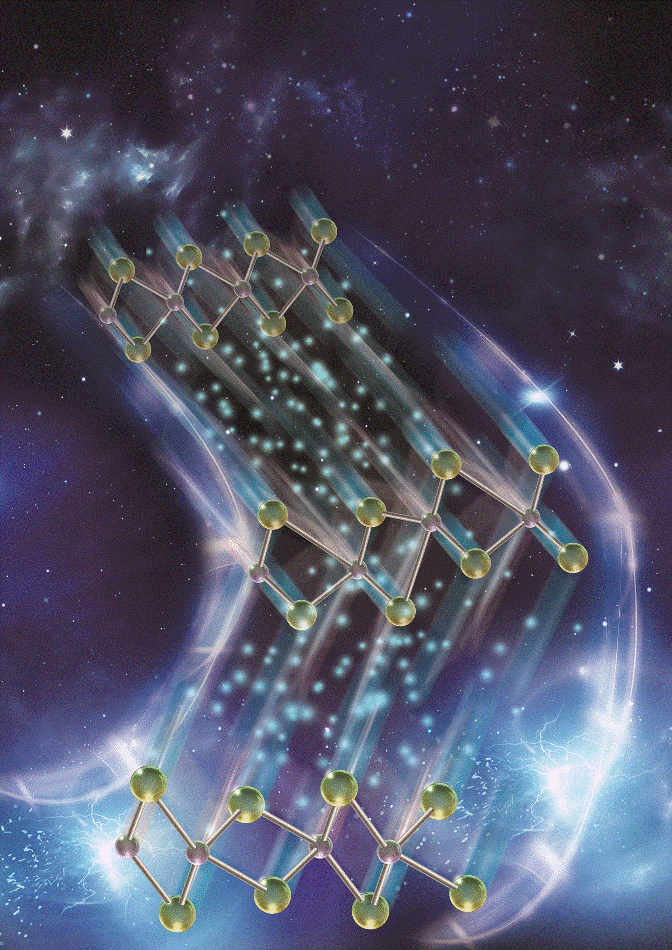Dec 14 2018
The term “smart” is ubiquitous from watches to whole buildings. However, the more the devices are made “smart,” the greater is the need for these objects to store and recover huge amounts of data rapidly without consuming excess power.
 Researchers have discovered a new functionality in a two-dimensional material that allows data to be stored and retrieved much faster on a computer chip, saving battery life. (Image credit: Purdue University)
Researchers have discovered a new functionality in a two-dimensional material that allows data to be stored and retrieved much faster on a computer chip, saving battery life. (Image credit: Purdue University)
Now, thanks to the discovery of a formerly unobserved functionality in a material known as molybdenum ditelluride, a countless number of novel memory cells could be part of a computer chip and offer that energy and speed savings.
The two-dimensional (2D) material constructs a memory cell by stacking into many layers. In association with the National Institute of Standards and Technology (NIST) and Theiss Research Inc., Purdue University researchers have designed this novel device. The results of the study have been reported in an advance online issue of Nature Materials.
Better memory technologies have been a long-standing requirement of chip-maker companies that could allow them to achieve a growing network of smart devices. Resistive random access memory, or RRAM for short, presents one of these innovative possibilities.
An electrical current in RRAM is usually powered via a memory cell composed of stacked materials, producing a change in resistance that records data as 1s and 0s in memory. The series of 1s and 0s among memory cells detects pieces of data that is read by a computer to execute a function and subsequently store into memory again.
For storing and recovering data about trillions of times, a material would have to be sufficiently strong; however, materials presently used have not been much reliable. Therefore, RRAM is yet to become available for wide-ranging applications on computer chips.
Molybdenum ditelluride can possibly withstand all those cycles.
“We haven’t yet explored system fatigue using this new material, but our hope is that it is both faster and more reliable than other approaches due to the unique switching mechanism we've observed,” stated Joerg Appenzeller, Purdue University’s Barry M. and Patricia L. Epstein Professor of Electrical and Computer Engineering and the scientific director of nanoelectronics at the Birck Nanotechnology Center.
Molybdenum ditelluride enables a system to change more rapidly between 0 and 1, possibly boosting the speed of storing and retrieving data. The reason of this is when the cell is applied with an electric field, atoms are displaced by a small distance, leading to a state of low resistance, noted as 1, or a state of high resistance, noted as 0, which can take place relatively faster than switching in traditional RRAM devices.
“Because less power is needed for these resistive states to change, a battery could last longer,” stated Appenzeller.
Each memory cell in a computer chip cell would be placed at the wires’ intersection, creating a memory array known as cross-point RRAM.
Appenzeller’s laboratory intends to construct a stacked memory cell that also integrates the other important parts of a computer chip—“interconnects,” wires that transfer electrical signals, and “logic,” which processes data—by using a library of new electronic materials developed at NIST.
“Logic and interconnects drain battery too, so the advantage of an entirely two-dimensional architecture is more functionality within a small space and better communication between memory and logic,” said Appenzeller.
For this technology, two U.S. patent applications have been filed via the Purdue Office of Technology Commercialization.
The study was funded by the Semiconductor Research Corporation via the NEW LIMITS Center (headed by Purdue University), NIST, the U.S. Department of Commerce, and the Material Genome Initiative.